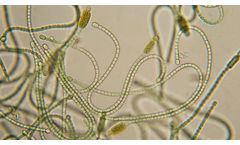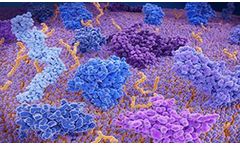Gastrointestinal Diseases Articles & Analysis
23 articles found
They have applications in basic biology research, as well as in fundamental processes for drug discovery, disease modeling, regenerative medicine, and personalized treatment approaches. ...
CH4 production has been linked to slower gastrointestinal motility, contributing to symptoms such as constipation, a common issue in children with IMO. ...
Bedfont® Scientific Limited hosted an insightful webinar Mastering Gut Health: Understanding SIBO, Carbohydrate Malabsorption, and Accurate Gastrointestinal Investigation. Gastrointestinal Physiologist and Bedfont® Medical Advisory Board member Melissa Dooley, led the discussion and shared valuable information on various gastrointestinal ...
Cyanotoxins are toxic substances produced by cyanobacteria, or blue-green algae, which can proliferate in water bodies under conditions like high nutrient levels and warm temperatures. There are over 1,118 different cyanotoxins identified globally in freshwater environments across 66 countries, illustrating the widespread nature of this ...
Individuals with reduced bile production or impaired bile flow, such as those with gallbladder disease or liver dysfunction, may benefit from supplementation with ox bile extract powder to improve fat digestion and absorption, potentially alleviating symptoms related to malabsorption and steatorrhea. Additionally, by promoting the excretion of cholesterol, ox bile extract ...
These results suggest that oral delivery of mRNA-loaded LNP is a viable strategy for treating gastrointestinal diseases by reestablishing the intestinal microenvironment. 2) Inhalation is also a preferred route of administration. ...
It has been said that the 21st century is the century of peptide drugs, and the fate of this substance, which lies between a large protein and a small molecule compound, is bound to be extraordinary. What are peptide drugs? Peptides are a class of compounds made up of amino acids linked by peptide bonds and are chemically active substances commonly found in living organisms. According to the ...
They evaluated the surfaces on which the highly contagious noroviruses, which cause gastrointestinal illnesses, are frequently found. The aim of the study was to analyze the level of contamination in closed or semi-closed facilities such as nursing homes, schools, kindergartens, youth shelters, hospitals and social health centers. ...
Due to a lack of robust in vivo gut models, animal studies are generally required to evaluate gut toxicity. However, these studies can be lengthy and expensive and may not accurately recapitulate the behavior of the human gastrointestinal tract. Drugs are thus often developed with undesired gut side effects that are not apparent until clinical trials. Organ-on-a-chip models are the closest ...
The microbiome has been shown to play roles in many different disease processes and is implicated in many more, from infectious and gastrointestinal diseases to autoimmune and neurological disorders. ...
Pure cholesterol stone prominence is much more common in Pakistan than pigment and mixed calculi. Gallstone disease is a major public health issue, associated with hospital admissions and surgical interventions. It is one of the most prevalent and costly gastrointestinal diseases, resulting in the Asian population having a large economic burden ...
This neurologist diagnosed me with a rare genetic disease in which one of the main presenting symptoms is migraines. The disease is called CADASIL . ...
ByCEFALY
Drinking water related infections are expected to increase in the future due to climate change. Understanding the current links between these infections and environmental factors is vital to understand and reduce the future burden of illness. We investigated the relationship between weekly reported cryptosporidiosis and giardiasis (n = 7,422), extreme precipitation (>90th percentile), ...
There is an increasing awareness that drinking water contributes to sporadic gastrointestinal illness (GI) in high income countries of the northern hemisphere. A literature search was conducted in order to review: (1) methods used for investigating the effects of public drinking water on GI; (2) evidence of possible dose–response relationship between sporadic GI and drinking water ...
This study represents the first systematic review and meta-analysis conducted to assess the association between swimming in recreational water and the occurrence of respiratory illness. Most studies focus their attention on gastrointestinal illnesses occurring after exposure to microbial polluted water. Fourteen independent studies that included 50,117 patients with significant heterogeneity ...
Recent outbreak investigations suggest that a substantial proportion of waterborne disease outbreaks are attributable to water distribution system issues. In this analysis, we examine the relationship between modeled water residence time (WRT), a proxy for probability of microorganism intrusion into the distribution system, and emergency department visits for ...
I’ve spent years as a biotech cheerleader, trumpeting the idea that biology can power innovation across diverse industries. Lately, I’m getting the feeling that experts in lots of other fields are also taking up the cheer. Case in point: Techonomy, the annual conference in Palo Alto that explores how technology is integral to the economy in which we live. At this spring’s ...
Among swimmers, 6.6% reported gastrointestinal (GI) illness compared with 5.5% of non-swimmers (unadjusted χ2 p < 0.001); 6.0% of swimmers and 4.9% of non-swimmers reported respiratory illness (p < 0.001); 1.8% of swimmers and 1.0% of non-swimmers reported ear problems (p < 0.001); and 3.9% of swimmers ...
Acute gastro-intestinal illness (AGI) is a major cause of mortality and morbidity worldwide and an important public health problem. Despite the fact that AGI is currently responsible for a huge burden of disease throughout the world, important knowledge gaps exist in terms of its epidemiology. Specifically, an understanding of seasonality and those factors driving seasonal variation remain ...
The objectives of this study were to examine the seasonal changes in the risk of gastrointestinal (GI) illness of beachgoers in the tropics, to compare the association between GI illness and water quality using various indicator organisms, and to study other beach health hazards. A prospective cohort study during two seasonal periods (summer and autumn) was conducted in a beach surrounded by ...













